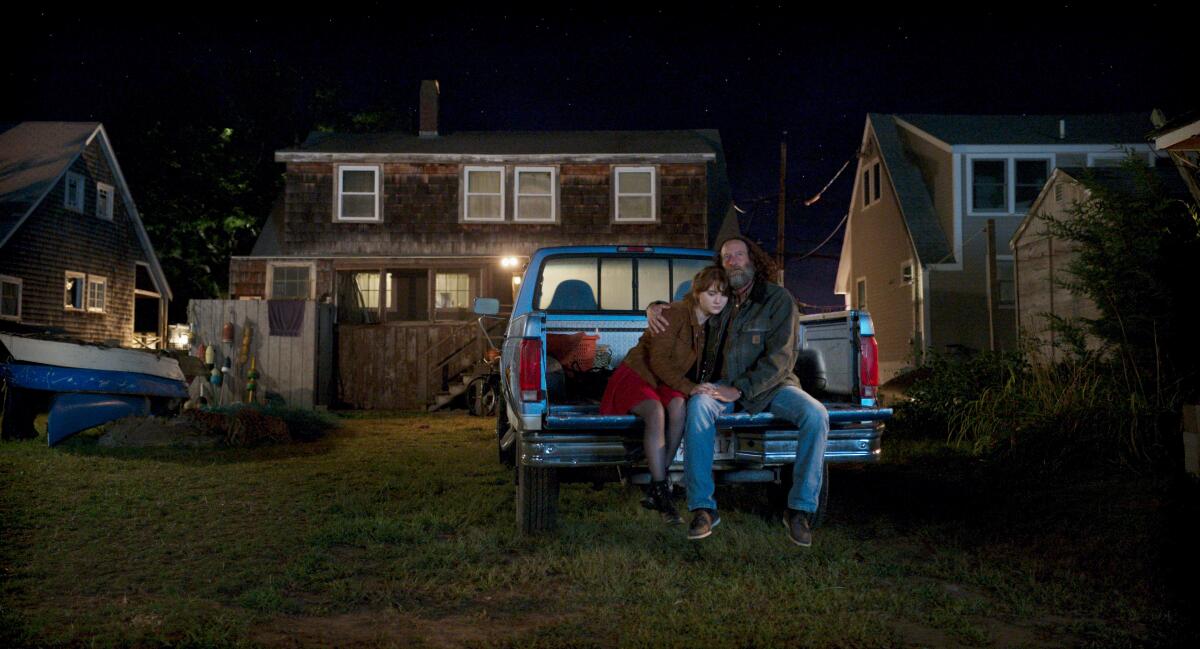How the subtlety of sound swells the emotional intimacy behind ‘CODA’

There’s a scene in director Siân Heder’s “CODA,” a story about a teenage daughter with aspirations to sing and whose parents and older brother are deaf, that’s so agonizingly touching it makes you want to reach for the tissue box.
The moment follows daughter Ruby’s (Emilia Jones) performance in a high school recital where her family can only look on wondering as parents around them stir in applause. Back at home, her father (Troy Kotsur) asks her to sing for him while nestled in the back of a pickup truck. To hear her voice, he gently places his hands on her neck. The intimacy of the acting alone is beyond moving, yet immersing us even further is a subliminal sound mix that opens our ears allowing us to lean in. The audio is stripped down, leaving the bare skin of the story — no distractions, only emotion.
“CODA” is simmering with similar auditory moments throughout its journey that sonically draw the audience into the rich dynamics of the family. The audio is a master class in perspective as it places us with the characters, inviting us to explore the juxtaposition of their everyday lives.
Creating the aural tapestry started with production mixer Jared Detsikas before the post sound team that included supervising sound editor Martin Pinsonnault and rerecording mixers Alexandra Fehrman and Stéphane Bergeron finessed the final version.
“Siân became really close to the Deaf community that helped her out making this story,” says Pinsonnault. “She was very sensitive to that and wanted to bring the spectator to the same kind of communication she had with them. So it became important for us to illustrate that so audiences could understand their language as the film progresses.”
Narrowing in on the particulars, sound sought to emphasize the hand gestures and expressive wording from the Deaf actors speaking American Sign Language, including Marlee Matlin (as the mother) and Daniel Durant (older brother).
On set, Detsikas recorded the sign language “as clean as possible” using wireless microphones and overhead boom microphones. “Our actors were all very expressive, and the sounds they made with their mouths are not something you can ADR later, so we knew we had to capture it live on set,” says Detsikas.
A hurdle in making sure production sound could record the audio without distraction was to collaborate with the costume department (led by Brenda Abbandandolo) to minimize clothing rustle. Another practice was to cover each scene with an overhead mic. “If the camera was shooting in a way we couldn’t get a boom in, I could go to Siân and ask if they could either switch up the cameras or allow us to place the mic in the shot to be removed later by visual effect, which is rare. Not many directors are willing to change what they’re doing to help audio,” notes Detsikas.
In post, the foley team added dimension to the hand gestures and created “another language” for sound to work with. “Siân wanted to make sure the emotion was being conveyed through the [American Sign Language]. So we combined the production sound with the foley in a way that if the emotion was amplified, either through excitement or anger, those sounds grew louder or softer to draw your attention to the character,” says rerecording mixer Fehrman.
Highlighting the dichotomy between Ruby and her Deaf family was another key sonic story point. We’re introduced to Ruby’s perspective early on during a dinner where her parents and brother don’t recognize they’re being loud. “It’s a scene where you could feel that there’s something different sound-wise,” notes Bergeron. “It was a moment in the script that we could use sound to make a point that Ruby’s very different from the rest of the family.”
In contrast, we experience the parents’ and brother’s point of view during the class recital when everything goes completely silent as Ruby sings on stage. “Siân knew straight away she wanted silence during that moment. It’s an important part to the story,” says Bergeron.
To pull it off, the team delicately mixed how quickly the sound should fade out and then come back in. “We were grateful for Siân’s direction,” says Fehrman. “With her wanting it to be from the perspective of not hearing anything, it becomes such a powerful moment.”
Music also played an intricate role in the soundscape, with Ruby singing a number of scenes a cappella or in choir. To record the production audio, Detsikas used a playback system and earpieces to capture the singing live instead of simply having the actors lip-sync to prerecorded music. He also recorded using stereo booms and created surround sound recordings of locations. “We recorded what’s called a frequency sweep, which allows you to record the reverberance of a room so that the reverb can be re-created later in post,” says the production mixer.
“The key for us was trying to make the recorded music sound and look like it was real,” says Pinsonnault. “Ideally, you never want the audience to notice when the music enters, but, rather, it’s part of the reality of what you’re watching.” To do so, sound looked to music producer Nick Baxter, who “stemmed out the music,” letting them adjust each element to create a seamless transition from dialogue to song.
“The challenge was balancing the line between music and dialogue but still being emotional at the same time,” says Bergeron. “It was all very subtle in what we tried to achieve, so as you watch, you grow closer to these characters and understand what they are feeling emotionally.”
More to Read
From the Oscars to the Emmys.
Get the Envelope newsletter for exclusive awards season coverage, behind-the-scenes stories from the Envelope podcast and columnist Glenn Whipp’s must-read analysis.
You may occasionally receive promotional content from the Los Angeles Times.










